Course:HIST104/98A - Group E
South Africa and the Jabulani

The Jabulani is the Official Match ball of 2010 FIFA World Cup South Africa. Jabulani means 'to celebrate' in Zulu.[1] Jabulani is the 11th edition of Adidas' World Cup match ball.
![[35]](http://wiki.ubc.ca/images/6/6b/Sa_language.jpg)
![[36]](http://wiki.ubc.ca/images/f/ff/Sa_language_dist.jpg)
In the Jabulani, there are 11 colours which represent 11 players, 11 official languages of South Africa, and 11 South African tribes that signify ethnological diversity [2]. Official languages include Afrikaans, English, Ndebele, Northern Sotho, Sotho, Swazi, Tswana, Tsonga, Venda, Xhosa and Zulu. The language distribution charts are from [3].
Adidas and the Jabulani
Adidas has been making footballs for FIFA World Cup since 1970 Mexico World Cup. [4] The Jabulani has eight 3-D spherically formed panels that are moulded together so as to achieve perfect roundness.[5] The Jabulani is also designed to have a Grip'n'Groove profile. Aero grooves created on the surface circle the entire ball in an optimal aerodynamic way. The grooves also give players complete control over the ball in all weather conditions and make the Jabulani the most stable and acurate ball ever made by Adidas. [6]

Adidas claims that famous soccer players such as Michael Ballack, Petr Cech, Frank Lampard, and Kaká love the Jabulani. [7] However, it should be noted that these players are being sponsored by Adidas. Besides, the Jabulani received harsh criticisms from many other famous soccer players such as Julio Cesar[8], Joe Hart[9], David James[10], and Lionel Messi[11].
From 1930 to 2006
1930
The first ever FIFA world cup was hosted in 1930. The 1930 world cup took place in Montevideo, Uruguay.[12]. Uruguay became the first ever host nation to win the world cup. Two different balls were used in the world cup final due to Argentina and Uruguay wanting to play with their own ball. One solution to the problem was to let both teams play with their ball each half (Argentina's ball the first half and Uruguay's ball the second half).[13]. These balls were made with a leather case and a rubber bladder.[14]. Because the outer part of the ball was leather, water absorption was inevitable. The balls were also very heavy (heading was painful) and suffered air leakages. Teams usually brought an air pump with them to inflate the balls.[15].
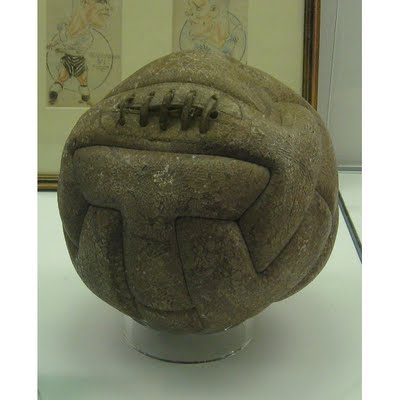
. These balls have a similarity to American footballs and rugby balls. This similarity is not surprising since all these sports derived from the same family. [16].
1950
The world cup in 1950 (post world war II) was hosted by Brazil. The ball used was not so different from previous models (1930's and 1940's). What distinguished this model was the ability to inflate the ball through a valve that came out (like today's balls). With the previous models, one would have to undue the stitch, inflate the bladder and redo the stitch again.[17]. The stitches that characterized the previous models was gone. Soccer balls no longer looked like footballs and heading the ball was safer than before. The stitches were unsafe when players headed the ball. For example, eyebrows opened or were cut when there was contact between the stitches and the player's forehead. The ball was also more spherical and lighter.[18]. This ball has 12 parts (same as the 1930 ball).
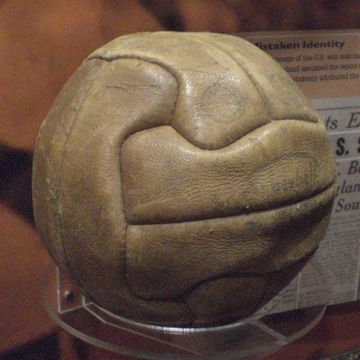
1954
The 1954 world cup was hosted in Switzerland. The ball used in 1954 became one of the first soccer balls to be colored. Soccer balls of the past were the color of leather (looked like some of today's basketballs and footballs) or red.[19]. Red balls were used to help spectators and players see the ball in snowy conditions (introduced in the early 50's).[20]. The ball in the 1954 world cup has 18 parts as apposed to the 12 parts seen in earlier models.

1962
Designs on soccer balls started to appear for the 1962 world cup hosted in Chile. The official name of the ball was called “Crack”.[21]. This model used 18 parts or panels (same as the 1954 ball) but the shape of the panels were less rectangular

. The official ball was also yellowish and sometimes looked orange. Other models were used throughout the tournament (models with 18 panels) that had more rectangular panels (same as the balls of the 1950's).[22].
1966
The official ball for the 1966 world cup was named “Slazenger” (it was also called “Challenge"). Slazenger was an Australian company. England was the host nation and decided to have the first ever mascot imprinted on the ball. The ball played throughout the tournament was light brown. The ball for the final was red (to signify the importance of that match). The ball has 25 panels or parts and each panel had a rectangular shape to it (going back to the 1950's models).[23]. The 1966 ball was special because it became the last ball to have rectangular panels and to have a brown or red color. The balls afterwards became white with hexagon and pentagon panels.


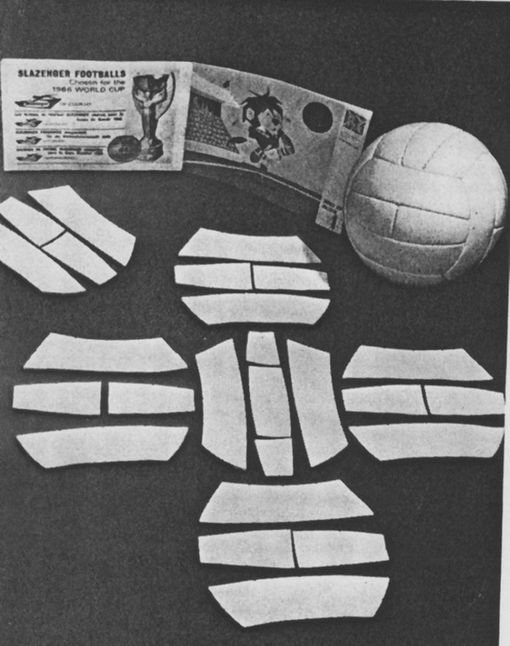
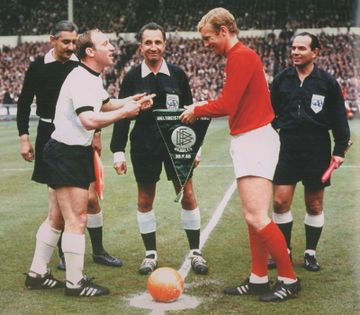
1970
In 1970 the soccer ball becomes revolutionary and influential for future models. The company Adidas designs a soccer ball that becomes “standardized” and traditional. It is the first time Adidas is officially involved in the creation of soccer balls. It all starts in the 1970 world cup hosted in Mexico. The official ball was called “Adidas Telstar” and it has 32 panels (12 black and 20 white). The balls were still made from leather but a special coating made the ball resistance to water (absorption of water).[48]. The Adidas Telstar became the roundest soccer ball to ever be made.[24]. The ball's black and white appearance made it easy to distinguish the ball from the field for black and white televisions (the 1970 world cup was the first to be televised live).[25].
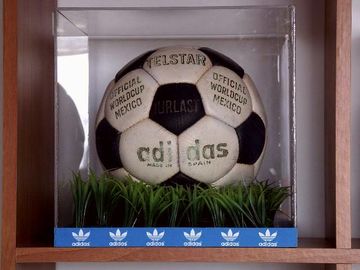
1978
The ball for the 1978 world cup in Argentina was the Tango River Plate.[26].This ball was designed by Adidas and it has 20 panels with half of them having a design. The design is black and triad and together gives the illusion that there are 12 white circles. Its leather based material was more impermeable than previous models.[27]. This ball became very significant because models until France 98 were based on the Tango River Plate's design (with slight modifications that did not change the optical illusion). In 1978 this soccer ball was the most expensive ball in history![28].
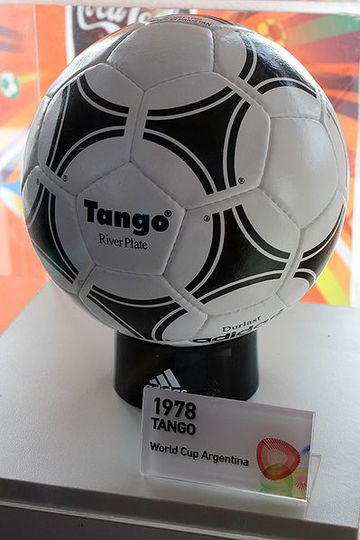
1986
It was not until the 1986 world cup that we first see the synthetic ball in action! The synthetic ball replaces the leather ball for various reasons. The absorption of water is further reduced and the durability of the ball increased.[29]. The synthetic material also made the ball lighter.[30].The ball was named “Tango Aztec” and the design of the ball was for the most part still the same (same as 1978 and 1982). Slight differences are seen in how the triad looks. The triad has an Aztec looking pattern which represents the Mexican culture. Futures balls began changing the design of the triad and started to represent the identity of the host nation more and more.
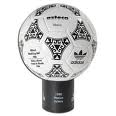
1998
France was home to the 1998 FIFA world cup. Adidas Tricolore was the chosen name for ball and it is the first Adidas ball to be manufactured outside of Europe.[31]. The Adidas Tricolore is also the first ball to have color in its triad which represent the colors of the French flag. Cockerel motifs formed the pattern on the triad.[49]. The Adidas Tricolore became the last ball to have the triad.
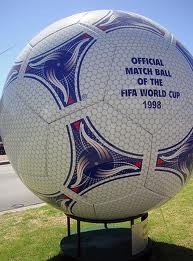
2002
The Adidas Fevernova gave departure to the standardized soccer balls of the past (1970-1998). This departure allowed soccer balls to be more representative of the host nation's culture and history and allowed more creativity in the designing of soccer balls. A great example is the Adidas Fevernova. The Adidas Fevernova was considered the most accurate ball ever made.[32]. One of the ball layers was foam and consisted of gas-filled micro-balloons. Energy was equally distributed throughout the ball when it was kicked.[50]. The Adidas Fevernova was also very controversial. Players found the ball to be too light and very difficult for goalkeepers.[51].
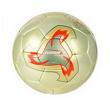
2006
The 2006 world cup in Germany introduced the Adidas Teamgeist (meaning team spirit).[33]. It was the first ball to have the names of teams (the two teams facing each other), the match date, the match kick-off time and the stadium written for each match.

The Adidas Teamgeist is white and black with some golden borders. The white and black colors represent the host nation Germany and the golden borders symbolizes the world cup trophy. [34] The ball used in the final was golden because according FIFA, the final match is of very high importance (same concept as the 1966 world cup). [35]